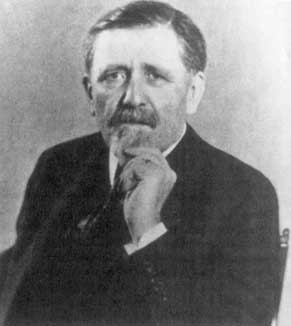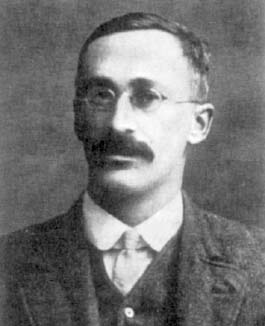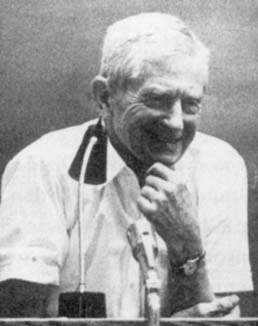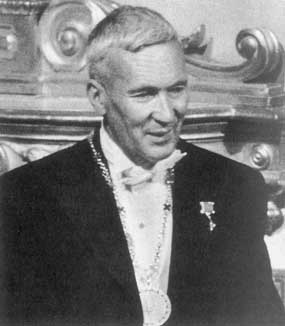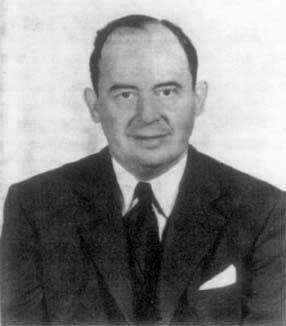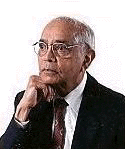| George Undy Yule |
1871-1951 |
George Undy Yule, a student of Pearson, contributed to and expanded upon Pearson’s work on fitting scew curves in 1891 and1896. Yule published a paper on correlation in Journal of the Royal Statistical Society (1897). This paper applied the theory of correlation to problems of social sciences and associated correlation to the method of least squares. In 1900 Yule presented formulas for measuring contingency tables, which proved to be superior to Pearson’s formulas presented at the same time. Yule also did much work on regression and invented time series analysis.> |
| Emile Borel |
1871-1956 |
Borel, a French mathematician, is largely noted for his work on the theory of functions of real variables. His work in this topic and measure theory led him to develop the strong law of large numbers |
| William Sealey Gosset |
1876-1937 |
While working as a chemist in Guinness brewery in Dublin, Gosset, an English chemist, developed the student’s t-test (1899). This test is used to test hypotheses about m, the mean, for small samples from normal populations. In order to conceal the brewery’s knowledge and application of such a test, Gosset published his findings anonymously under the name of Student. |
| Sydney Chapman |
1888-1970 |
Chapman, an English scientist, was primarily interested in geophysics. He did work on the thermal diffusion, astronomy, and the Earth’s magnetic field and magnetic storms. He was elected into the royal Society in 1919 and awarded the Royal Society’s Copley Medal in 1964. |
| Ronald A. Fisher |
1890-1962 |
In 1918, Ronald
Fisher, an English geneticist and statistician, published a paper on
analysis of variance, the topic of his greatest contributions to
statistics. He also initiated the
idea of independent datum as being dimensions in space and gets credit for
the expression of degrees of freedom. In 1921, he presented the concept of likelihood. In 1922, he redefined statistics. He created techniques to deal with small
sample sizes. He worked on hypothesis testing. In 1925, Fisher published Statistical Methods for research
Workers.
|
|
1892-1965 |
Frank Wilcoxon is known for his work in nonparametric statistics. He developed the sign-ranked test, which is used to test hypotheses about two populations when there cannot be any assumptions concerning the distribution of the populations involved. He also jointly derived the Mann-Whitney-Wilcoxon test, a nonparametric test used to find differences between two populations. He also found statistical methods to test fungicides and insecticides. |
|
|
1894-1981 |
Jerzy Neyman was born in Moldavia, Russia. He worked with both Karl Pearson and his son E.S. Pearson, co-authoring two papers with E.S. Pearson: On the problem of the most efficient tests of statistical hypotheses (1933) and The testing of statistical hypotheses in relation to probabilities a priori (1933). Neyman derived essential conclusions concerning hypothesis testing, confidence intervals, and survey sampling. He is famous for the Neyman-Pearson Lemma concerning sufficiency and necessity of UMP level a test in hypothesis testing and for sets called Neyman-shortest sets, which minimize probability of false coverage. Neyman’s unique method of simultaneously applying statistical theory with applications led him to make considerable contributions to statistics and to formulate theoretical statistics as we know it today. He also served as chair of the Statistics department at Berkely. |
|
|
1900-1993 |
Deming was an American expert on statistics. He devised new methods of utilizing statistics in quality control. From 1939-1945, he worked for the U.S. Census Bureau as a statistical advisor. He made a considerable contribution to the implementation of samples in data collection for the Population Census, a method which was not often used at this time. He wrote papers on sampling methods and surveys such as On errors in surveys and The sampling procedure of the 1940 Population Census. Deming was instrumental in instructing and influencing the application of his methods of quality control in Japan, increasing their competitiveness in the world market. In an effort to remain competitive with countries implementing his ideas, America also adopted his statistical applications to quality control. He wrote the book Statistical Adjustment of Data (1938). |
|
|
1903-1987 |
Kolmogrov, a Russian mathematician, had a major influence on the development of probability. He published “General Theory of Measure and Probability Theory” (1929) in which he introduced a unique theory of probability built on basic properties from measure theory. This was expanded in 1933 and translated into English as Foundations of the Theory of Probability (1950). He is also responsible for thoroughly expanding the principles of stochastic processes in “Analytical Methods of Probability Theory”. His Kolmogrov equations contributed greatly to the advancement of the applications of probability theory in physics, chemistry, civil engineering, and biology. He also studied Markov chains, which influenced dynamic systems as well as other areas of mathematics, and stationary processes, which has statistical importance in cybernetics. |
|
|
1903-1957 |
Newmann was born in Hungary but later moved to Washington D.C. He became a professor at Princeton University and is primarily remembered for his work on “rings of operators”, which is now referred to as Nuemann algebras. He also had a hand in the creation of the hydrogen bomb during WWII. Neumann and Oskar Morgenstern, an economist, coauthored the book, Theory of Games and Economic Behavior (1944), in which he introduced the topic of game theory. This book addressed competitive situations in which the actions of players at each turn are taken into consideration and consequently have an impact on the path of the next turn. Neumann concluded that for the most part when games involved only two parties, there was really nothing to gain by playing. |
|
|
1906-1970 |
William Feller was born in Croatia but eventually became professor at Princeton University. He was a mathematical probabilist with contributions in measure theory, transformation of the Markov processes and partial differential equations, branching processes, stochastic processes, birth and death processes of which he was the first to study thoroughly, Brownian motion, and diffusion processes. He coined the term recurrent event process and did a thorough study on this topic as well. He studied renewal processes, which occur frequently in biology. He wrote the book Introduction to Probability Theory and its Applications, which is a common reference for theoretical probability as well as applications of probability. |
|
|
1913-1996 |
Paul Erdos was an eccentric mathematician born in Hungary. He was introduced to Mathematics by his parents, both were Mathematics teachers. His is known for his unique method of providing simplistic proofs to known results. He wanted his proofs to clearly convey the truth and reasons behind the results. He is well known for his work in number theory and combinatorial analysis, and along with Aurel Wintner, and Mark Kac founded probabilistic number theory. He is known for his constant relocation and work with many mathematicians. While working with Paul Turan, he provided simplistic or elementary proofs for results in approximation theory. |
|
|
1915-2000 |
John Wilder Tukey was a talented and diverse mathematician born in the U.S.A. He became interested in statistics while helping the WWII effort on Fire Control Research. He wrote numerous papers making major statistical contributions in time series (especially spectrum analysis on which he wrote three papers), analysis of variance, and the introduction in 1949 in a paper co-authored with Cooley of the fast Fourier transform algorithm, which has vast applications in science and engineering. He also wrote a paper in 1949 on the sampling theory of power spectrum estimates. |
|
|
|
1920 - |
C. R. Rao, born in India, is considered as one of the top statisticians of the twentieth century. Rao has written about 400 papers on statistics, and many books including Matrix Algebra and Its Applications to Statistics and Econometrics, Statistics and Truth, Handbook of Statistics 10: Signal Processing and Its Applications, Estimation of Variance Components and Applications. Some of the results for which he is known are the Cramer-Rao bound, Rao’s Score test, Rao-Blackwell Theorem, Rao-Blackwellization, Fisher-Rao Theorem, Rao’s Theorem, Fisher-Rao Metric, Rao Distance, Neyman-Rao Test, Rao least squares, IPM Methods, Rao’s covariance structure, Rao’s U Test, Rao’s F Test, Rao’s Paradox, Rao-Rubon Theorem, Lau-Rao-Shanbhag Theorems, Rao-Yanoi Inverse, Kagan-Linnik-Rao Theorem. |
|
1921-1970 |
Alfred Renyi was born in Hungary and experienced many hardships during the World War II era. He was sent to a Fascist Labour Camp from which he managed to escape, and then successfully rescue his parents from a Budapest ghetto. He worked with F. Riesz, Fejer, Linnik, and Erdos. He coined the well-known phrase, “ A mathematician is a machine for converting coffee into theorems”. Renyi worked as a probability professor at the University of Budapest from 1948-1970. He also acted as visiting professors to many more universities, including Stanford. Renyi wrote the book Probability Theory, which was an English translation and revision of his original book published in Hungarian (1954). His final work, Foundations of Probability (1970), which was in the process of publication when he died, presents a unique text on probability, emphasizing theory over applications. Renyi is also famous for his Dialogue on Mathematics (1963), which reveals mathematics to non-mathematicians in a Socratic dialogue. |

